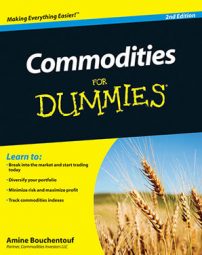Trading commodities through futures contracts takes a lot of discipline, patience, and coordination. One of the biggest deterrents to participating in the futures markets is the number of moving pieces you have to constantly monitor.
Underlying asset
The underlying asset is the financial instrument that the futures contract represents. The underlying asset can be anything from crude oil to platinum, to soybeans, to propane. Because futures contracts are traded on designated exchanges, every exchange offers different types of assets you can trade.
Futures contracts can be used to trade all sorts of assets, not just traditional commodities like oil and gold. Futures can be used to trade interest rates, indexes, currencies, equities, and a host of other assets. Some futures contracts even allow you to trade weather!
Before you place your order, make sure that you’re very clear about the underlying commodity you want to trade. Specify on which exchange you want your order executed. This is important because you have contracts for the same commodities that trade on different exchanges.
For example, aluminum futures contracts are traded on both the CME and the LME. When you’re placing an order for an aluminum contract, it’s important to specify where you want to buy the contract: either on the COMEX or on the LME.
Underlying quantity
The contract size, also known as the trading unit, is how much of the underlying asset the contract represents. To meet certain standards, all futures contracts have a predetermined and fixed size. For example, one futures contract for ethanol traded on the Chicago Board of Trade is the equivalent of one rail car of ethanol, which is approximately 29,000 gallons.
The light, sweet crude oil contract on the CME represents 1,000 U.S. barrels, which is the equivalent of 42,000 gallons. The futures contract for frozen pork bellies represents 40,000 pounds of pork.
Make sure that you know the exact amount of underlying commodity the contract represents before you purchase a futures contract.
Because more individual investors want to trade futures contracts, many exchanges are now offering contracts with smaller sizes, which means that the contracts cost less. The CME, for instance, now offers the miNY™ Light Sweet Crude Oil contract, which represents 500 barrels of oil and is half the price of its traditional crude oil contract.

